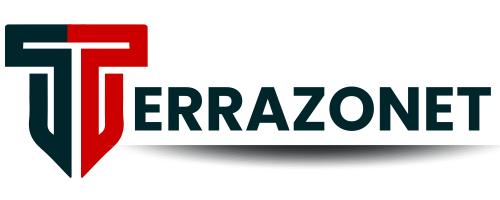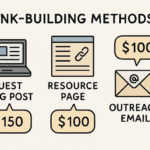The internet is a battleground. With new platforms popping up constantly and user attention spans shrinking by the second, online businesses are in a constant race to stay relevant. It’s no longer enough to simply “be online.” To thrive, platforms must evolve, optimize, and innovate—fast.
In this post, we’ll explore how online platforms can not only survive but genuinely outshine the competition in today’s cutthroat digital environment.
1. Prioritize User Experience at Every Turn
It sounds obvious, but it’s the part most platforms still get wrong.
Your users don’t care about your backend technology. They care about how easy, fast, and intuitive it is to interact with your platform. Every page, every click, every scroll should serve the user—not the algorithm, not the design team, and not the executive vision board.
Great user experience (UX) includes:
- Mobile-first design – Over 55% of web traffic now comes from mobile.
- Simple navigation – Users should never need to guess where to go.
- Speed – A delay of even one second can reduce conversions by 7%.
In short, if your platform feels clunky, you’re already losing.
2. Build Trust Through Consistent Branding and Messaging
Trust is currency in the digital world. And it’s fragile.
Consistency in tone, values, and visual branding builds recognition and fosters loyalty. If your platform feels like it was written by five different people or looks different from one page to the next, users pick up on it—and not in a good way.
You can strengthen your platform’s identity by:
- Using a unified color scheme and typography across all touchpoints.
- Maintaining a consistent brand voice (whether it’s serious, playful, or professional).
- Aligning copy, CTAs, and messaging with your brand’s core values.
Trust isn’t earned in a day. But it can be lost in seconds.
3. Master the Art (and Science) of SEO
Search is still the starting point for most online journeys. So if your platform isn’t discoverable on Google, you’re effectively invisible.
Smart SEO today is more than just stuffing keywords. It’s about aligning content with user intent, structuring pages for crawlability, and ensuring technical performance.
To compete organically:
- Use clean URL structures and descriptive meta tags.
- Create helpful, original content targeted to your users’ real questions.
- Ensure your site is mobile-friendly and fast-loading.
At the heart of Google’s ranking system is a concept known as EEAT. So, what is EEAT? This stands for Experience, Expertise, Authoritativeness, and Trustworthiness. Platforms that consistently demonstrate these traits are more likely to rank—and stay ranked.
4. Personalize the Experience (But Don’t Be Creepy)
People like platforms that feel like they were designed just for them. Think about your favorite streaming service or online retailer. Chances are, the recommendations you get feel surprisingly spot-on.
That’s personalization done right.
The key is balancing personalization with privacy:
- Use behavioral data to recommend products, services, or content.
- Allow users to customize dashboards or interfaces.
- Be transparent about data collection, and give users control.
You don’t need to know your user’s shoe size. But if they keep coming back for outdoor gear, your platform should reflect that interest without overstepping.
5. Focus on Community and Connection
Digital competition isn’t just about technology. It’s about people.
Platforms that foster a sense of belonging or community tend to outperform those that don’t. Whether it’s a discussion forum, a review section, or simple interactive features—users want to be heard, seen, and connected.
Consider:
- Integrating community spaces (like Slack groups, forums, or in-app chat).
- Encouraging user-generated content such as reviews or stories.
- Highlighting top contributors or active members.
If users feel like they’re part of something bigger, they’ll stick around longer—and tell others.
6. Constantly Analyze, Then Iterate
Platforms that succeed treat optimization as a continuous process.
Analytics tell you what’s working and what’s not. But it’s what you do with that data that separates the winners from the laggards. This means running A/B tests, monitoring user behavior, and adapting your strategies based on feedback and performance.
Use tools like:
- Google Analytics or GA4 for traffic and conversion tracking
- Hotjar or FullStory for heatmaps and session recordings
- Statista for benchmarking against broader trends
Even small changes—a CTA color, a rewritten headline, a simplified form—can result in major gains.
7. Diversify Your Traffic Sources
Relying solely on one channel (say, Google or Facebook Ads) is like building your house on someone else’s land. One algorithm tweak, and you’re in trouble.
To stay resilient, platforms should diversify their traffic and revenue sources:
- Invest in content marketing and email nurturing.
- Build a presence on multiple social platforms, tailored to your audience.
- Explore partnerships, affiliate programs, or referral systems.
Think of it like this: the more channels you control, the less vulnerable you are to market swings or platform policy changes.
8. Make Customer Support a Competitive Advantage
In a world of chatbots and long wait times, offering fast, human, and helpful customer support is a powerful differentiator.
Support isn’t just about fixing issues—it’s about strengthening loyalty and gathering insight. Many top-performing platforms use support feedback to inform product development, UX design, and marketing strategies.
To upgrade your support:
- Offer real-time chat (with a human fallback).
- Maintain an up-to-date knowledge base.
- Follow up with customers after resolving their issues.
When users feel supported, they’re more likely to become loyal advocates.
Final Thoughts
Thriving in today’s digital world isn’t about doing one thing exceptionally well. It’s about aligning dozens of small things to work together in harmony—UX, branding, SEO, personalization, analytics, community, traffic diversity, and customer support.
The digital landscape is fierce. But with a thoughtful, strategic approach, your platform can rise above the noise and claim its place at the top.
It’s not about being first. It’s about staying ahead.
YOU MAY ALSO LIKE: Unlock Marketing ROI: How adsy.pw/hb3 Transforms Links into Goldmines



















